Vicki and I have just returned from England, where we attended a three-day course to learn the basic principles of a non-diagnostic, non-invasive, hands-on system of bodywork for equines, which we hope will ultimately help us to generate income in the future by helping horses to feel better and their owners to learn how to assist them to do so.
This system of bodywork is known as The Equine Touch, a modality which was developed by Jock Ruddock, a Scotsman, who had previously evolved a human modality known as the Vibromuschular Harmonisation Technique (VHT), and his wife and partner, Ivana, a vet who was seeking a new way to work on animals which did not include guesswork diagnosis or invasive characteristics that would be contraindicative to the animal concerned. In her capacity as the Equine Touch Director for Education Ivana utiised her commitment and her experience as a university lecturer to develop a programme designed to create educated Equine Touch practitioners with a knowledge and understanding of those elements which influence a horse’s health. You can find out more about The Equine Touch by visiting the Equine Touch website.
So how did we come across The Equine Touch. Again it was just one of those things whose implications we did not fully realise at the time. While we were living in Bellingen during the last six months of our life in Australia, we felt that our horses would benefit from some bodywork just as they had been helped by Bowen therapy when we were living three hours to the north. Unfortunately, there were no Bowen practitioners in our area, so we went in search of something similar and found it. We came across an Equine Touch practioner by the name of Jane Clothier who had recently moved to Bellingen. Jane helped our horses during our last few months in the area. Since then she has moved to the Northern Rivers area of New South Wales. You can find out more about her work here.
The course which Vicki and I attended represents the first part of the first of a number of levels of training which we need to complete successfully, if we wish to become Equine Touch practitioners. It turns out that Lyn Palmer, the Equine Touch instructor from whom we have just received Level I training, is the very same person who trained Jane Clothier when the latter started out on the Equine Touch practitioner route. Lyn has been highly instrumental in facilitating the spread of The Equine Touch in the United Kingdom. Not only has she been treating horses since she became one of the first Equine Touch practioners in the country, she has been training students for many years as well. While doing so, she has been working very closely with Jock and Ivana Ruddock, and has provided them with a good deal of assistance and support. Many horses and their humans have benefitted in the process.
Lyn is based just outside Glastonbury, which is situated in Somerset, a county in the west of England. The area is steeped in English folk lore and history. Situated south of Bristol and Bath, Glastonbury is home to a large alternative community, which draws its inspiration from the essence of that folk lore and history. This is the area in which the fabled island of Avalon was said to be located, the home of what is now present-day Glastonbury. It was to this island that King Arther is said to have been ferried after his battle with Mordred, and it was here that his sword, Excalibur, has its origins. The monks of the Abbey of Glastonbury, which largely burned down in the twelfth century and whose ruins can still be seen today, sought to associate the Arthurian legend with Glastonbury, purportedly to raise money. Whatever the case, the association stuck and became the inspiration for numerous alternative ventures, including the famous Glastonbury Festival, which regularly hosts some of the biggest names in the music industry. Evidence of this can also been seen in the many alternative shops which line Glastonbury’s main streets. Selling everything from psuedo-medieval clothes to charms, talismen and crystals, these outlets sport names such as Chalice Well, The Crystal Man, Facets of Avalon, Gothic Image, The Psychic Piglet, Yin Yang and the Cat & Cauldron. If you are from Byron Shire in Australia, you are likely to feel very at home here and vice versa, apart from the weather.
This part of England was also the area from which Alfred the Great launched his comeback against the Danish invaders and reasserted the dominance of the Anglo-Saxon Kingdom of Wessex, which was ultimately to be expanded by his son, Edward, and the latter’s successor, Aethelstan, to bring all of England under one ruler for the first time in 927 AD. It was the alliance of the Anglo-Saxon nobility with the Roman Catholic church along with the encouragement of learning under Alfred the Great which helped to ensure that England remained a beacon of civilisation along with the Moorish territories in the Iberian pensinsula while much of Europe succumbed to the Dark Ages.
Of course it is one thing to read about the folk lore and history of this part of England. It is quite another to actually find yourself seated in wood and stone pub in a fifteenth century inn which is essentially still performing the service it provided to the public five to six hundred years ago. Sipping a traditional English lukewarm ale simply seems to confirm what the senses have already detected: much of the past is still very much in the now. You look around at the uneven floor and walls, the heavy wooden beams holding up the ceiling and lining the doors and windows, and wonder at the tales that they must have witnessed. Unfortunately, we did not manage to find much time to play the tourist apart from what we experienced as we went about our business and a brief drive to Wells to find ourselves before the closed doors of the famous Cathedral Church of St. Andrew. We shall have to make up for this on a future visit.
And there will be future visits if all goes according to plan. Our Level 1 training has taught us the principles required to help a horse rebalance its hind and forequarters, it neck and its back, as well as to address any specific areas of concern. This we learned at Lyn’s smallholding, where there were various horses which served as teaching models and training subjects. Lyn herself has three horses, all of which are 20 years old. There is Q, a curious thoroughbred gelding, Belet, a warmblood gelding that excels as a tuition model, and Stroller, an adopted pony. All were in pretty good health and are veterans of numerous Equine Touch training sessions, so they knew what to expect. A couple of visiting horses served as guinea pigs for the students under the capable guidance of Lyn and Wendy, a capable and experienced Equine Touch practitioner from Germany (originally South Africa) who is training to become an instructor. There was Milly, an emaciated New Forest pony with an injured tendon in its left foreleg, and Corby, a 16-year-old Arab gelding with an injury on its left hindleg and a sore back, who had just been jumped the day before despite his condition.
Fortunately, there were only four students, so we had enough horses to go around. There was Vicki and myself, Petra, a horse dentist and barefoot trimmer from Germany, and Sue, the manager of the horse riding facility at Millford School in Street, a village to the south of Glastonbury. On the first day, Friday, we learned about the background to The Equine Touch and its basic principles. On the Saturday we put those principles into practice, first on each other and then on the horses in pairs under the guidance and supervision of Lyn and Wendy.
Sunday saw us convene at the Millford School riding facility, where we had permission to help any horses that might require assistance. After going through the two last special focus area procedures, we then paired off to treat a number of horses. There was Felix, an eight-year-old Irish Sporthorse gelding, who was very accommodating and an absolute delight to work with. Then there was another Irish Sporthorse gelding called Dixon but he was 10 years old and a huge fellow of about 18 hands but fortunately a gentle giant. Vicki and Sue worked with a couple of horses whose details I did not get, while I paired up with Petra to help two horses. The idea was to simulate normal operational conditions as far as possible under the guidance and supervision of Lyn or Wendy. One of the students would hold the horse while the other worked on it. Where necessary we would help each other by providing feedback or asking questions.
The first horse that Petra and I helped was a grey gelding called Credit, who was a new arrival in the facility. Petra held him while I went about my business, which started with a brief introduction of myself. Credit was given the opportunity to sniff me and grow accustomed to my presence while I showed him why I was there by gently performing a ‘marking’ or ‘branding’, which consisted in feeling all over his body to detect any irregularities, such as atrophy or spots that are sore, or hot or cold to the touch. Credit soon revealed that he was quite sensitive in the whithers. Then I carried out what we call a basic body balance, which involves various moves in the hind and forequarters, the neck and the saddle area. Again Credit revealed that he was sore in the whithers. What was very rewarding to see, however, was first of all the growing trust he exhibited in the course of the treatment. Then there was his response. Once Credit was trusting, he relaxed and consequently allowed his body to respond to what was happening to it. Slowly but surely the senstivity in his whithers diminished. I followed the basic body balance with a number of special procedures for areas of concern, in this case the foreleg, his pectorals and coccyx. While the sensitivity in Credit’s whithers did not entirely disappear, it was rewarding to see him visibly rebalance and relax, while seeking contact with the hands that were treating him. In itself relaxation would be goal enough for my own horse, Pip, when I got back to her.
The transformation in the next horse was even more profound. This time I held the horse, while Petra went to work. Our subject was a seven-year-old mare called Nymph, who soon revealed that she felt pain in her back and girth areas, especially on the right, where she was also generally stiff. So sensitive was she that each time when Petra approached her on the left, she backed away and exhibited unmistakeable apprehension. Petra followed up the branding with a basic body balance. Soon a clear change became evident. Nymph began to relax and the signs of apprehension which she exhibited on the right gradually began to diminish. Petra followed up the basic body balance with special procedures for the foreleg, the temporomandibular joint and the throat. Overall, I felt that the impact of the treatment was quite dramatic. Nymph relaxed completely to the extent that by the end of the session she no longer objected to Petra approaching her on the right. On the contrary, she even sought contact with Petra. Although I am not convinced that this treatment marked the end of Nymph’s difficulties, especially if she is to be handled in precisely the same way as she has until now, it is clear to me that The Equine Touch helped her and may continue to do so, if it is applied again in the future.
My impression is that horses seem to feel into The Equine Touch in a way that goes well beyond the physical. This ties in with the integrity and intent with which we humans are required to exhibit when applying this modality. An essential part of this involves the owner. An equine touch practitioner is required to involve the owner by asking the latter to hold his horse during a session, by inquiring about the conditions in which the horse is kept, by explaining what is happening, and by fielding any questions. This seems to be a modality which is in line with my overall approach to horses, as I have outlined in my posts on this blog. I therefore look forward to learning even more about it and to applying it to the horses that I am privileged to help.
Naturally, we have only begun our training and Level 1, in particular. Now we have to put what we have learned into practice and to take detailed notes on each case, which will be used for the purposes of part of our overall assessment. These notes will also constitute part of our historical portfolio, which we will be able to consult as we continue this journey. Next month we will be returning to Glastonbury for the start of Level 2. By that stage each of us will have carried out no less – and preferably more – than 10 annotated treatments, which will be assessed for educational purposes.
What I particularly value about The Equine Touch, is that it enables me to tap directly into an individual horse to learn directly from and about it, and ultimately, to befriend the horse and to help it become healthier and happier. As such, it represents a valuable complement to all the other ways in which I try and do this, whether it be interaction with the horse or its general care and management. This weekend I felt The Equine Touch and so did a number of horses. And those horses have shown me that they like to feel it and that I would like to help them do that. And if this also generates a modest income in the process, so much the better.
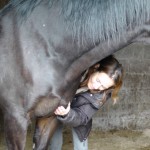

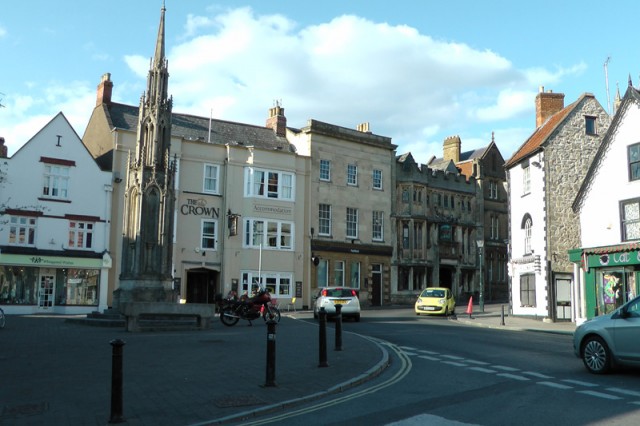
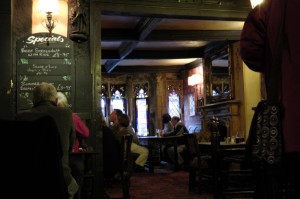

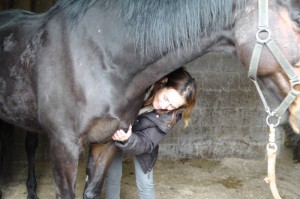
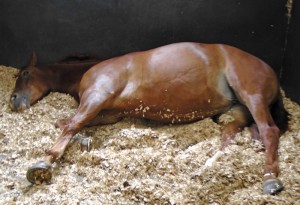




Dear Andrew, very interesting and I wish you and Vicky many more happy, intriguing, surprising, endearing, inspiring and joyful occasions where you will be in a position, in combination with the feel and knowledge both of you have already acquired, to heal horses and humans in their continuous endeavour to develop their awareness.
Sorry for this awfully long sentence :-).
I am familiar with ET. Some years ago it was possible to do levels1 to 3 (I think) here in Holland. A lady somewhere in the province of Limburg facilitated these courses and sometimes, if I remember correctly, Jock Roddick would join. For some reason that was not possible anymore when I had decided to take definite steps in that direction. But perhaps you already know.
Being a BOWEN Practitioner myself and having met and spoken with and attended a workshop given by Beth Darrall in 2003, it has made it possible for me to use the BOWEN moves for horses. Sometimes giving a BOWEN treatment to the horse owner at the same time. Especially if and when I am very certain there is a definite connection between the 2 which is part of the horse’s discomfort.
So there is still a lot for you to discover in this field.
Warmly,
Geerteke
Dear Geerteke
You are absolutely right: there is still a lot for me to discover in this field.
We were fortunate to have an excellent equine Bowen practitioner treat our horses regularly while we lived in Byron Shire in Australia. Our horses were very appreciative of her skills and so consequently were we.
Be well.
Andrew
How wonderful I am so happy that there are people tuned into animals and by what I have read and witnessed from your writing and photos that the areas that are being worked on are the balancing points of the meridians, have I come to the correct deduction.
Being a Kinergetics Practitioner on humans and small furry animals, never worked on horses, did help some cows many years ago, they were in distress and tuned into their emotional bodies and helped take off emotions, but other than that it is mainly 2 legged that I work on.
There is a treatment called TMJ which gives energy to the muscles and joints of the upper and lower jaw, simply by giving energy to this area the body can be balanced.
it makes perfect sense to treat a horses TMJ the same way, this is great news indeed.
When my boy Tigga was not well, I kept trying but alas in vain to get the Vets to listen to me as to what was being tested up with Kineasology muscle testing and the diagnostic points that are given in the book Energy Medicine for Dogs and Cats written by Dianne Stein, the diagnostic points are so accurate, but I was fobbed off,
finally an ultra sound showed up that the diagnostic points are correct, but unfortunately it was too late for my boy, he was beyond help.
I did make it most clear that when I come to them with a diagnosis that has been muscle tested then they need to listen and act on the information.
Lucky Horses, one of the women I trained with works with Kinergetics with some of the horse studs up the Hunter Valley.
I just love Energy work.
I work from time to time on the fur children that come stay, especially the rescue ones, they always need to have their emotional and mental light body corrected.
Dear Laraine
You must be very observant, as your deduction is correct.
TMJ is one of the procedures we learned while on the course and is one which I practised on Anaïs earlier today. There are times when our princess can be a very stressed and unbalanced mare. I am intrigued to see whether The Equine Touch can help her too. Vicki treated Pip today and she just relaxed right into it.
The law prevents us from making a diagnosis. At the end of the day, though, this need not be a problem. Good horse people know that the horse can tell them best where it is sensitive or in pain. The Equine Touch also enables a horse to show the practitioner and owner where it hurts. We humans just need to observe closely and then act appropriately. Incidentally, there is a variant of this modality for other four-footers.
By the sounds of it, the animals that come your way are very fortunate. May many more find their way to you.
Be well!
Andrew
It certainly is a small world! I met Jock and Ivana eight or nine years ago in Colorado and kept in touch for some time, but lost contact. Jock actually worked on me with some neck pain I was having at the time and it was quite wonderful. He did some inspiring work on a number of horses, too. I particularly liked that he would do some work and then leave the horse alone to process what had been done, always asking and never pushing. He and Ivana are both delightful and are committed to the well-being of the horses.
It is very exciting that you have discovered this path! Things do unfold in wonderful ways, don’t they? I especially love that all of the good work being done by so many finds its way around the world and your sharing your journey is part of that network. Thanks to you and Vicki!
Continue to follow the threads of the universe. I am loving the ride!
The best to you,
Susan
Dear Susan
It is a small world indeed!. Then again, it seems to me that those who are committed to finding a meaningful way of being, especially with horses, find each other eventually. This is probably explained by the fact that the numbers are still so small. Yet they are growing, which means that it should become even easier to find like-minded travellers in the future.
May your ride never be lonely!
Take care
Andrew
I attended one of Jane’s courses a couple of years ago. Yes, it was amazing to see the response from some of the horses. I only did the first part of the course and didn’t pursue it further, but it obviously has great results.
Do you know anything about T Touch? I’m wondering how that differs?
Well, you have attended some interesting courses over there – funny, isn’t it how our journey in life can take us from one thing to the next – and to things that we never thought we would be doing!
Cheers,
Heather
Dear Heather
Although I know Jane as a practitioner, I did not realise she was also an instructor. Oh well, given that we are being trained by Jane’s instructor, we are not doing too badly, I suppose.
All that I know about TTouch comes out of a book by its founder. The procedures and moves seem to differ greatly from those of The Equine Touch. Our horses were not too impressed when we tried some of the TTouch moves on them but perhaps this has something to do with the fact that we have not been trained to apply the techniques.
Still, opposition to a move could be a welcome outcome. For instance, when we treated our horses earlier today, Anaïs made it very clear that some moves were unwelcome. Of course, this immediately revealed areas of concern which could benefit from further treatment in the coming weeks. Pip, on the other hand, simply relaxed right into the treatment, although she too could benefit from further sessions, as she has a number of sensitive spots.
Yes, being can be a surprising journey if you embrace it.
Take care!
Andrew
Dear Andrew,
by chance I came across your blog yesterday. I was reading with some interest your experiences with Hempfling.
I came across Hempfling´s first book in 1994 (published only in german by then). It was my very first book on horses. I didn´t have any contact to horses until this moment. In 2000 I read Imke Spilker´s book. I never had a chance to attend to any clinic or life class though.
Have you heard of Sabine Birmann? She was a kind of assistant of Hempfling from about 1993 to1998: http://mitpferdensein.de/ She left prior to his “horse-shaman-period” noticing the unhealthy change in his personality.
Another interesting person is Andreas Breitsch, who thanks Hempfling for opening his eyes with horses despite of some personal conflict he had with him. Later he learned with Sabine as well. Currently he is working as a mental healer for humans and horses, it seems with great success: http://www.blue-healing.de/blue-healing.de/Willkommen.html
http://www.pferdeheiler.eu/pferdeheiler.eu/Startseite.html
http://www.youtube.com/watch?v=Utijrj08iM0&feature=player_embedded
Saludos from Argentina
Norbert
Dear Norbet
Thank you for taking the time to contact me from Argentina.
Yes, Vicki and I have been aware of Sabine Birmann for some time. Thank you for the links to Andreas Breitsch. We will check them out. Like Andreas Breitsch, I am also grateful to Hempfling for some of the ways in which he has helped me become a more horse-friendly human in spite of the difficulties that I have had with him. At the end of the day, if we were to insist that all those from whom we can learn must be perfect before we learn from them, we would not learn much from other people.
Be well!
Andrew
Dear Andrew,
you are right: we can only teach ourselves at last for only we decide what we want to learn …
Andreas Breitsch worked as a hoof technician for some years before he became a healer. He invented “The Happy Horse Glue-On-Shoe”: http://www.the-happy-horse.de/THH/Home.html
You can read some statement of Andreas with respect to Hempfling here: http://www.claudia-sanders.de/2003/01/01/klaus-ferdinand-hempfling/
… and here:
http://pferdezeitung.com/Hauptartikel/328/mitpferdensein.de
It is all in german … unfortunately …
Norbert